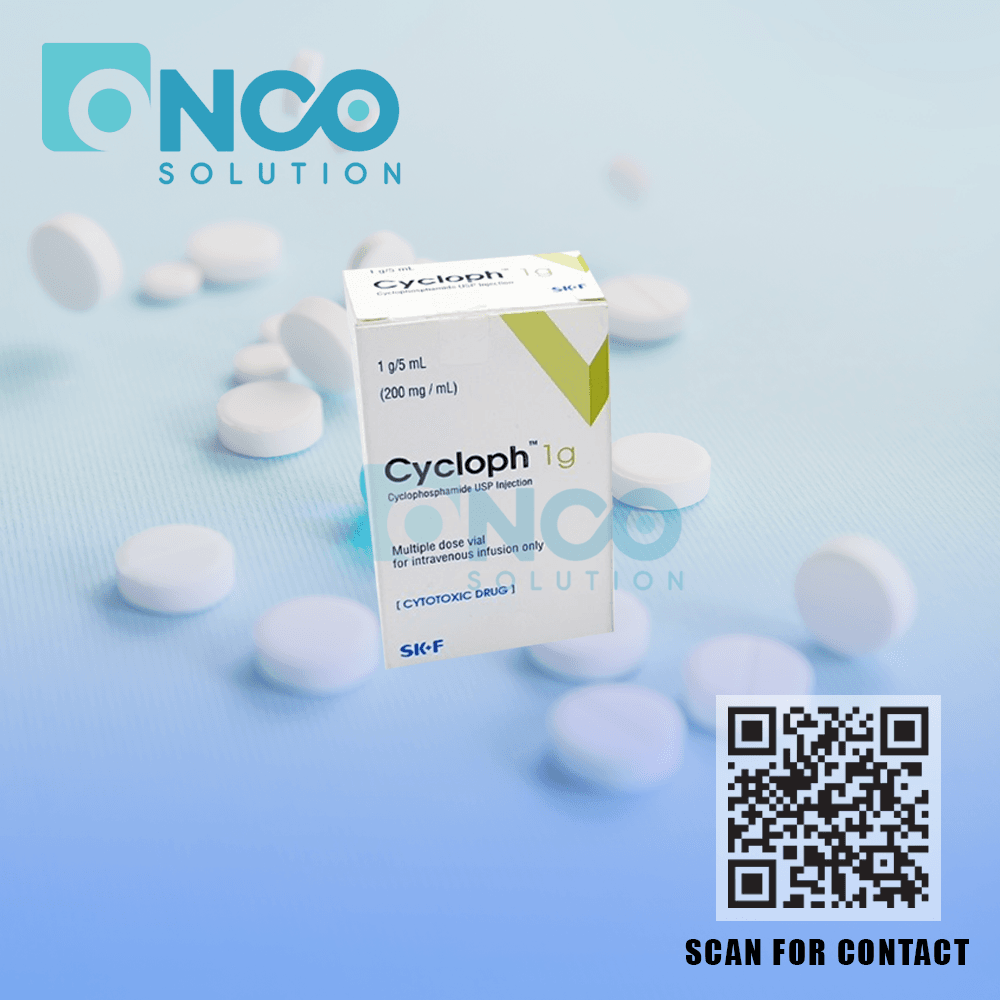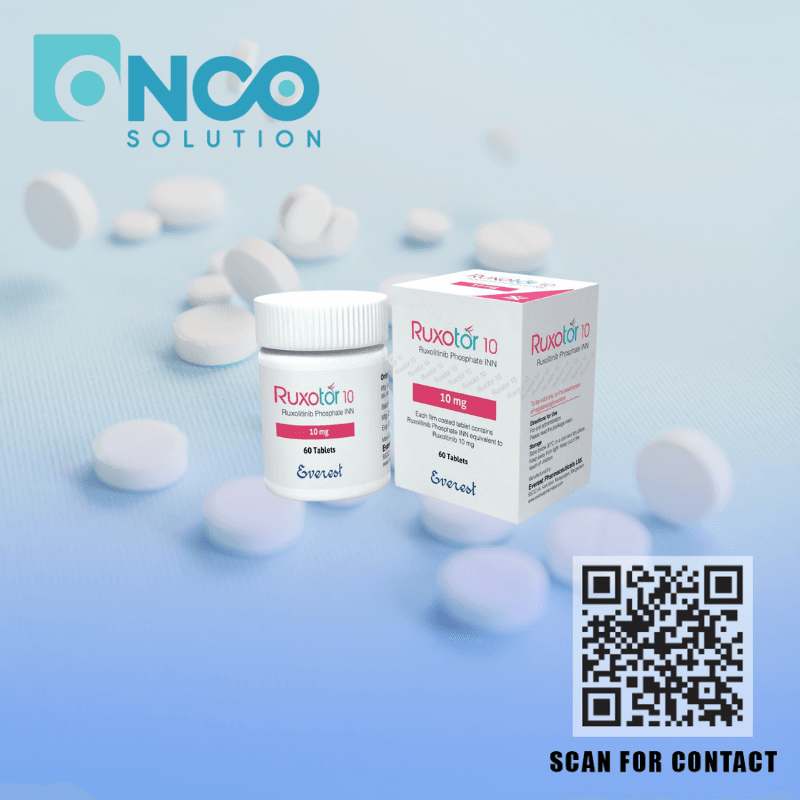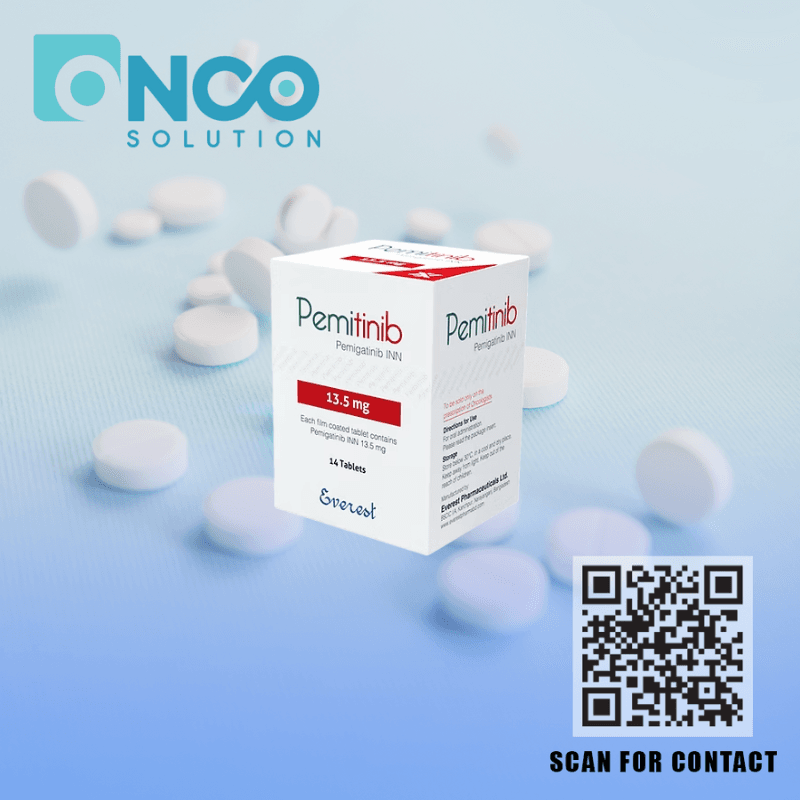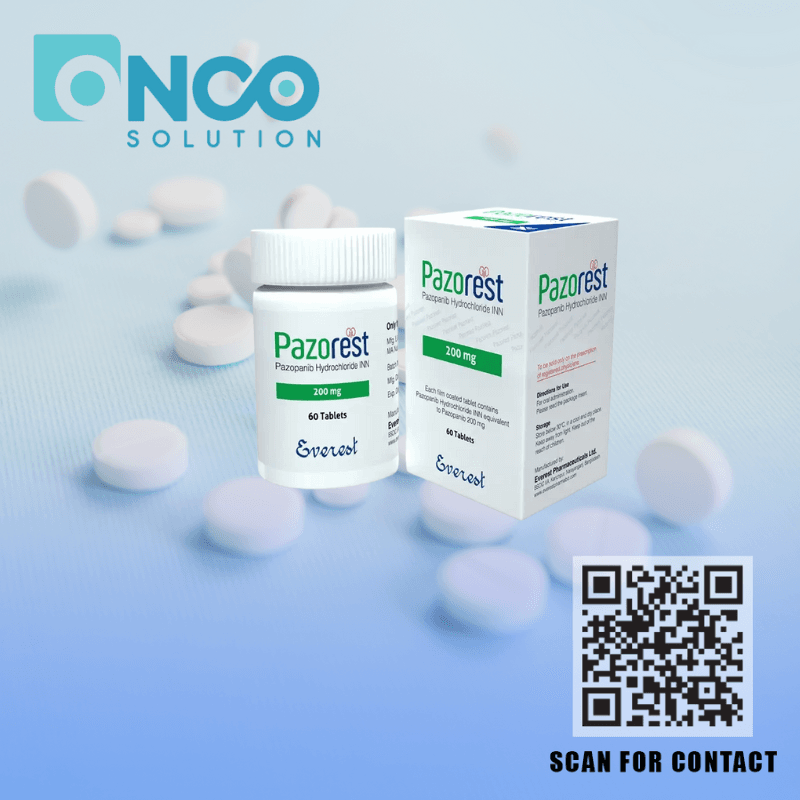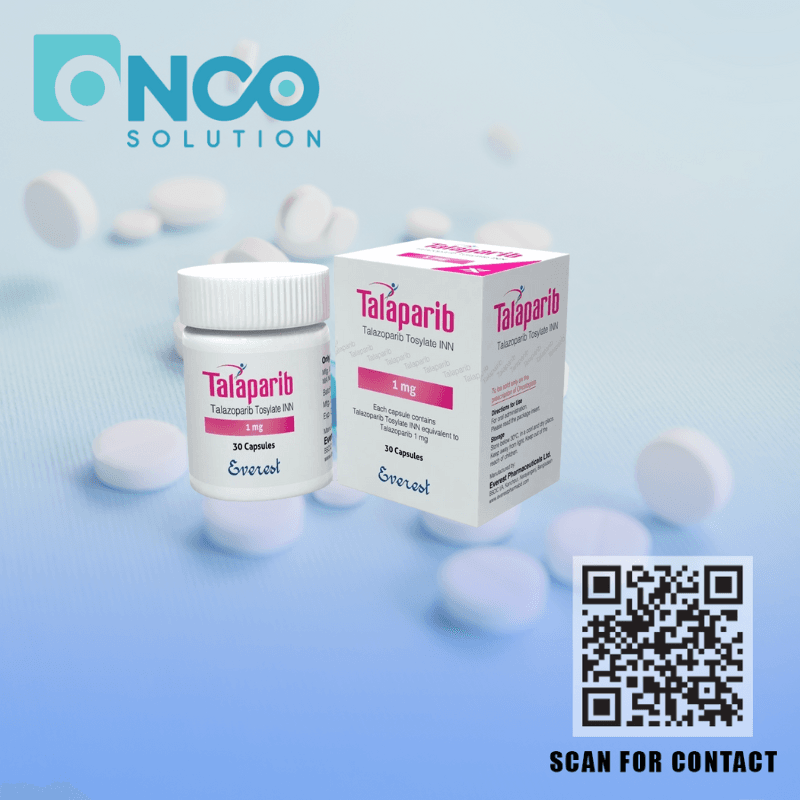Introduction
The Cycloph 1g (Cyclophosphamide) Injection is a high-potency alkylating chemotherapy agent designed for aggressive treatment of advanced hematologic malignancies and solid tumors, including Hodgkin’s lymphoma, non-Hodgkin’s lymphoma, leukemia, and carcinomas of the breast, ovary, and bladder. Manufactured by Eskayef Pharmaceuticals Ltd., a global leader in oncology innovation, and supplied by Onco Solution, a trusted provider of life-saving cancer therapies, this 1g formulation delivers intensified DNA cross-linking action to disrupt cancer cell proliferation. Ideal for patients with bulky or refractory tumors, Cycloph 1g combines robust efficacy with stringent safety protocols for advanced cancer management.
Key Benefits
- High-Potency Dosing: 1g/vial for optimal dosing in aggressive or treatment-resistant cancers.
- Broad-Spectrum Efficacy: Effective against lymphomas, leukemias, multiple myeloma, and solid tumors.
- Combination Synergy: Enhances outcomes when paired with immunotherapy, radiotherapy, or targeted therapies.
Indications
The Cycloph 1g (Cyclophosphamide) Injection is indicated for:
- Malignant Lymphomas: Hodgkin’s disease, Burkitt’s lymphoma, diffuse large B-cell lymphoma.
- Leukemias: Acute lymphoblastic leukemia (ALL), chronic lymphocytic leukemia (CLL).
- Solid Tumors: Breast carcinoma, ovarian adenocarcinoma, neuroblastoma, retinoblastoma.
- Multiple Myeloma and Mycosis Fungoides (advanced stages).
Pharmacology
- Mechanism of Action: Cyclophosphamide is metabolized in the liver into active alkylating metabolites (e.g., phosphoramide mustard), which form DNA cross-links, blocking replication and inducing apoptosis in rapidly dividing cancer cells.
- Synergy: Potentiates the effects of monoclonal antibodies (e.g., rituximab) and checkpoint inhibitors.
Dosage & Administration
Malignant Diseases (Adults & Pediatrics)
- Intravenous Monotherapy:
- Initial Dose: 40–50 mg/kg divided over 2–5 days (e.g., 1g daily for 4 days in a 70 kg patient).
- Alternative Regimens:
- 10–15 mg/kg every 7–10 days.
- 3–5 mg/kg twice weekly.
- Combination Therapy: Reduce dose by 20–30% when used with other cytotoxic drugs.
Preparation & Handling
- Reconstitution:
- Direct IV Injection: Dilute to 20 mg/mL using 0.9% NaCl, 0.45% NaCl, or 5% dextrose.
- Example: 1g vial + 50 mL diluent.
- IV Infusion: Dilute to 2 mg/mL with the same solutions.
- Example: 1g vial + 500 mL diluent.
- Direct IV Injection: Dilute to 20 mg/mL using 0.9% NaCl, 0.45% NaCl, or 5% dextrose.
- Administration:
- Infuse slowly over 60–120 minutes to minimize adverse reactions (e.g., facial swelling, hypotension).
- Avoid Sterile Water for Injection (risk of hypotonic hemolysis).
Storage
- Unopened Vials: Store at 25°C; protect from light.
- Reconstituted Solution:
- Refrigerate at 2–8°C (36–46°F) for up to 28 days.
- Discard unused portions after 28 days.
Contraindications
- Hypersensitivity to cyclophosphamide or its components.
- Severe renal impairment (eGFR < 30 mL/min) or urinary obstruction.
Side Effects
Common Reactions:
- Hematologic: Severe neutropenia (nadir at 7–14 days), thrombocytopenia, anemia.
- Gastrointestinal: Nausea, vomiting (manage with 5-HT3 antagonists), diarrhea.
- Dermatologic: Alopecia (reversible post-treatment), nail discoloration.
Serious Risks:
- Myelosuppression: Life-threatening infections (e.g., sepsis, pneumonia).
- Cardiotoxicity: Acute myocarditis, arrhythmias.
- Pulmonary Toxicity: Interstitial pneumonitis, respiratory failure.
- Secondary Malignancies: Increased risk of bladder cancer and myelodysplasia.
Warnings & Precautions
- Hydration Protocol:
- Administer 2–3 liters of IV fluid daily to prevent hemorrhagic cystitis.
- Monitor urine output and renal function (creatinine, electrolytes).
- Infection Control:
- Prophylactic granulocyte colony-stimulating factor (G-CSF) for neutropenia.
- Cardiac Monitoring:
- Baseline and periodic echocardiograms for high-risk patients.
- Fertility Preservation:
- Offer sperm/egg cryopreservation due to risk of permanent infertility.
Adverse Reactions
- Hepatotoxicity: Veno-occlusive disease (monitor LFTs).
- Neurologic: Hyponatremia (correct with hypertonic saline if severe).
- Reproductive: Ovarian/testicular failure, teratogenicity (Pregnancy Category D).
Use in Specific Populations
- Pregnancy: Contraindicated. Use dual contraception during and for 1 year post-treatment.
- Lactation: Discontinue breastfeeding due to risks of infant immunosuppression.
- Renal Impairment: Dose reduction required for eGFR < 60 mL/min.
Why Choose Cycloph 1g (Cyclophosphamide) Injection?
- High-Potency Efficacy: Critical for aggressive or refractory malignancies.
- Trusted Manufacturer: Produced by Eskayef Pharmaceuticals Ltd., a pioneer with 30+ years in oncology excellence.
- Global Accessibility: Supplied by Onco Solution, ensuring equitable access across Asia, Africa, and Europe.
Technical Specifications
- Active Ingredient: Cyclophosphamide USP (1g/vial).
- Packaging: Lyophilized powder in sterile, tamper-evident vials.
- Shelf Life: 24 months (unopened).
Commitment to Excellence
Eskayef Pharmaceuticals Ltd., part of Bangladesh’s Transcom Group, combines cutting-edge research with uncompromising quality control. Partnering with Onco Solution, they deliver life-saving therapies to underserved regions, prioritizing affordability and patient-centric care.
Conclusion
The Cycloph 1g (Cyclophosphamide) Injection is a pivotal therapy in advanced oncology, offering high-potency DNA-targeted action for aggressive malignancies. By integrating this alkylating agent into treatment regimens, clinicians leverage a trusted solution backed by Eskayef Pharmaceuticals Ltd. and Onco Solution – global leaders in cancer care innovation.

